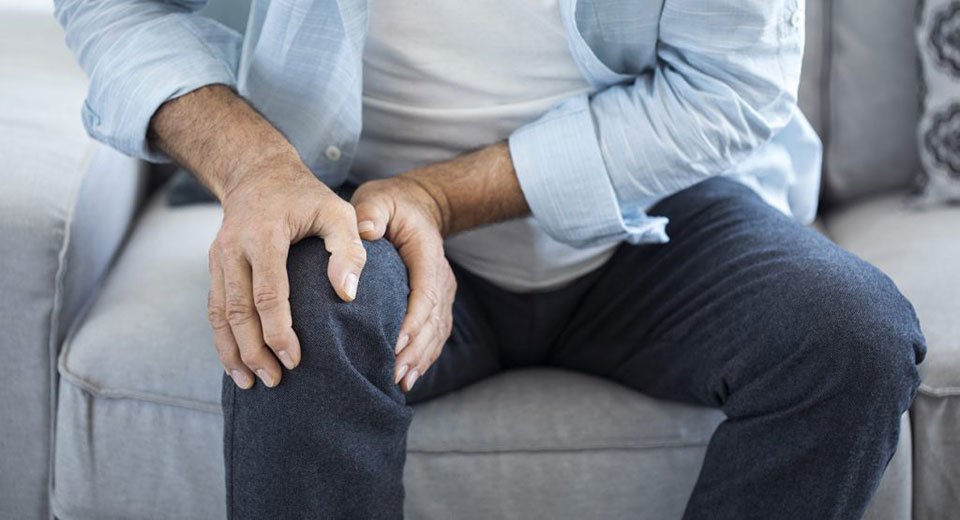
Many who suffer from chronic joint stiffness and pain find that cold winter weather worsens their symptoms. Though the scientific evidence behind this relationship is inconclusive, taking a few extra measures to ease joint pain may help you brave the snow, rain, and low temperatures that are a staple of Buffalo winters.
These tips are meant to be as inclusive as possible and should help mitigate arthritis flare-ups, as well as fight stiff and painful joints for the majority of people out there. However, each person’s experience with arthritis is different, and it is important to find out what works best for you.
It is also important to note that while these tips will help you fight joint stiffness and pain during the cold months, they are by no means a cure. If you have arthritis, it is important to visit an orthopaedic specialist to receive a proper diagnosis and potential treatment options.
Staying Warm
Though not all arthritis patients agree on this, many patients find that warm weather makes their condition more manageable. Unfortunately, we are not all blessed with the opportunity to live in a warm climate.
Everyone puts on extra layers in wintertime but if you suffer from arthritis staying warm becomes even more important. Here are a few ways to keep the effects of cold weather at bay.
1. Wear Light but Warm Layers
Wearing several layers of clothing is the best way to trap warm air close to your body. However, wearing bulky and heavy clothing won’t do you any favours if you already feel stiff.
Be smart in your choice of clothing materials – stick to breathable cotton as your first layer and then add on lightweight wool or fleece. Make sure that your outerwear is suitable for the weather and does not let in any moisture.
Your core, from your hips up to your shoulders, is the most important part of your body to keep warm. This promotes a better blood flow which in turn also keeps your entire body warmer.
2. Wear Compression Socks and Gloves
Your extremities are the first parts of your body to cool down. These areas also have poorer blood circulation, especially in women.
Compression socks and gloves help with both your blood circulation and trapping heat so they are a worthy purchase. You might also want to add compression tights or thermal tights to your wardrobe.
3. Take a Hot Bath or Shower
A hot bath is not only relaxing but can also serve as great pain relief. A hot bath improves your blood flow and relaxes muscles, which can reduce your arthritis-related pain.
Make sure that you don’t cool off too quickly after steaming in the bathroom. Step into warm and comfortable clothing directly afterwards.
4. Sleep with Extra Warmth
Although it is often said that sleeping at cooler temperatures gives you a better night’s sleep, this won’t be the case if you are already experiencing joint pain from the cold. During the winter, staying warm during the night can help keep joint stiffness and pain at bay when you wake up.
Staying Active
Although it is often easier said than done, staying active is an integral part in preventing joint stiffness. If the outdoors does not seem inviting during cold weather, staying active indoors is a great alternative.
1. Daytime Outdoor Activities
Vitamin D has been shown to help improve bone health, as well as give your immune system a much-needed boost. Since the sun is the best source of vitamin D, getting your necessary dose becomes more difficult during the winter.
Going for a walk or partaking in other light outdoor activities can help you soak up the few rays that do peek through during winter (remember to bundle up!). Walking your dog, finding an exercise buddy, and opting to walk instead of taking the car on short trips are all great ways to get outdoors.
2. Take Classes
If you are not the type to get excited about going to the gym, signing yourself up for exercise classes gives you an extra push to stay consistent. Find a sport that suits your condition though, do not join a class that would only make you feel worse.
Indoor classes are a good alternative to outdoor activities. They are rarely affected by the weather and being indoors also keeps you warm.
3. Get a Massage
Though this is not technically staying active, it can help with pain management, especially when done regularly. A good massage therapist will know how to relieve your joints and relax your muscles, it also helps with blood flow.
Adjust Your Diet and Supplements
If you know that colder weather affects you negatively, start paying closer attention to your diet and supplements before the temperature drops. Preparing your body from the inside out can help minimize the impact of cold weather.
1. Consume Vitamin D
As mentioned, vitamin D is very important for those suffering from arthritis. Since there are fewer sun hours during winter, you may consider taking vitamin D supplements (but always after consulting with your primary care doctor).
There are also foods rich in vitamin D that you can make part of your staple winter diet. Examples are fatty fish like salmon and sardines, mushrooms, milk, shrimp, egg yolks and cod liver oil.
2. Consult Your Chiropractor
Although many try to treat their arthritis through lifestyle changes instead of medication, sometimes you need more targeted treatment. Advanced stages of arthritis can be extremely impactful on your everyday life, and no amount of keeping warm will relieve your pain and stiffness. In these cases, chiropractic specialists like Dr Michelle Dodge, Dr Kristen Bezek, or Dr Ashley Lapinski at MG Dodge Chiropractic can help diagnose and treat your symptoms, and get you back to the pain-free life you deserve.
If you are tired of suffering from joint stiffness and pain, give us a call or schedule an appointment with one of our office today.
Uncategorized
COMMENTS: No Comments
